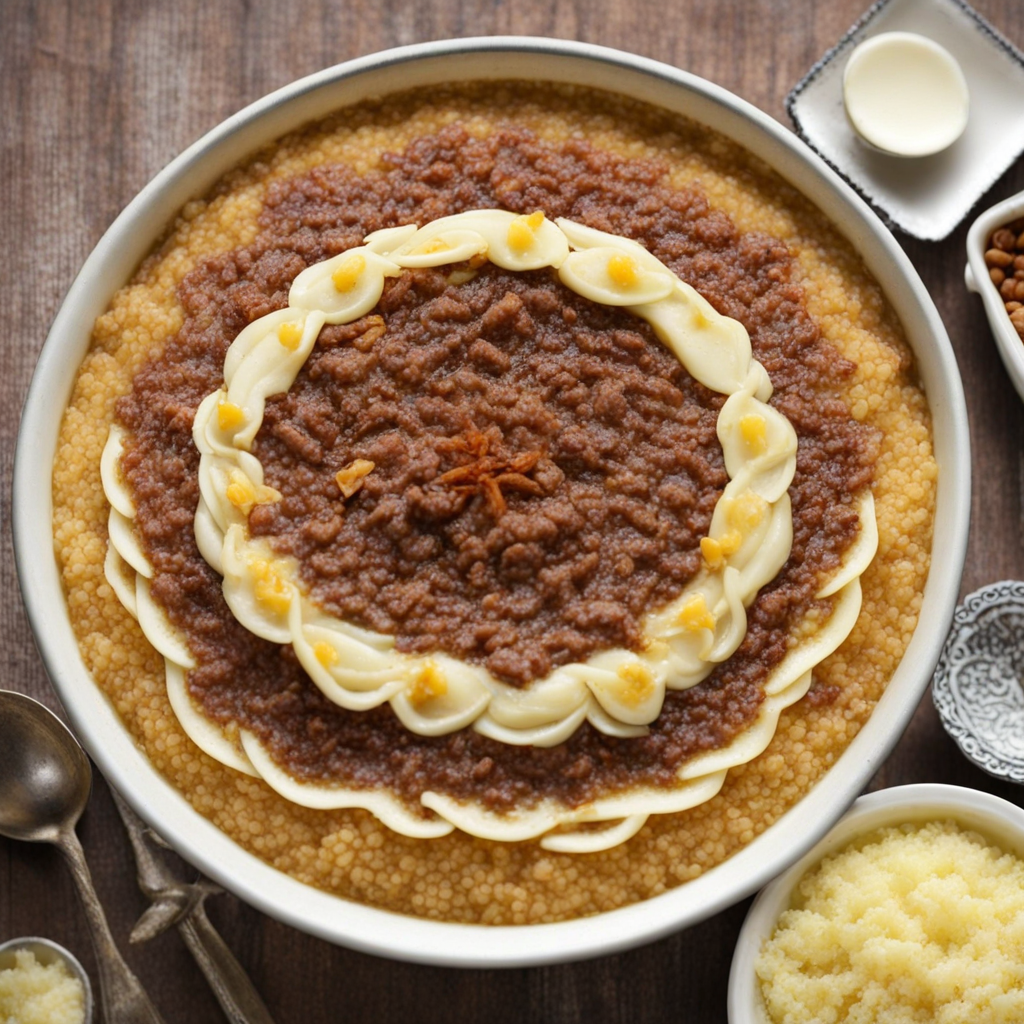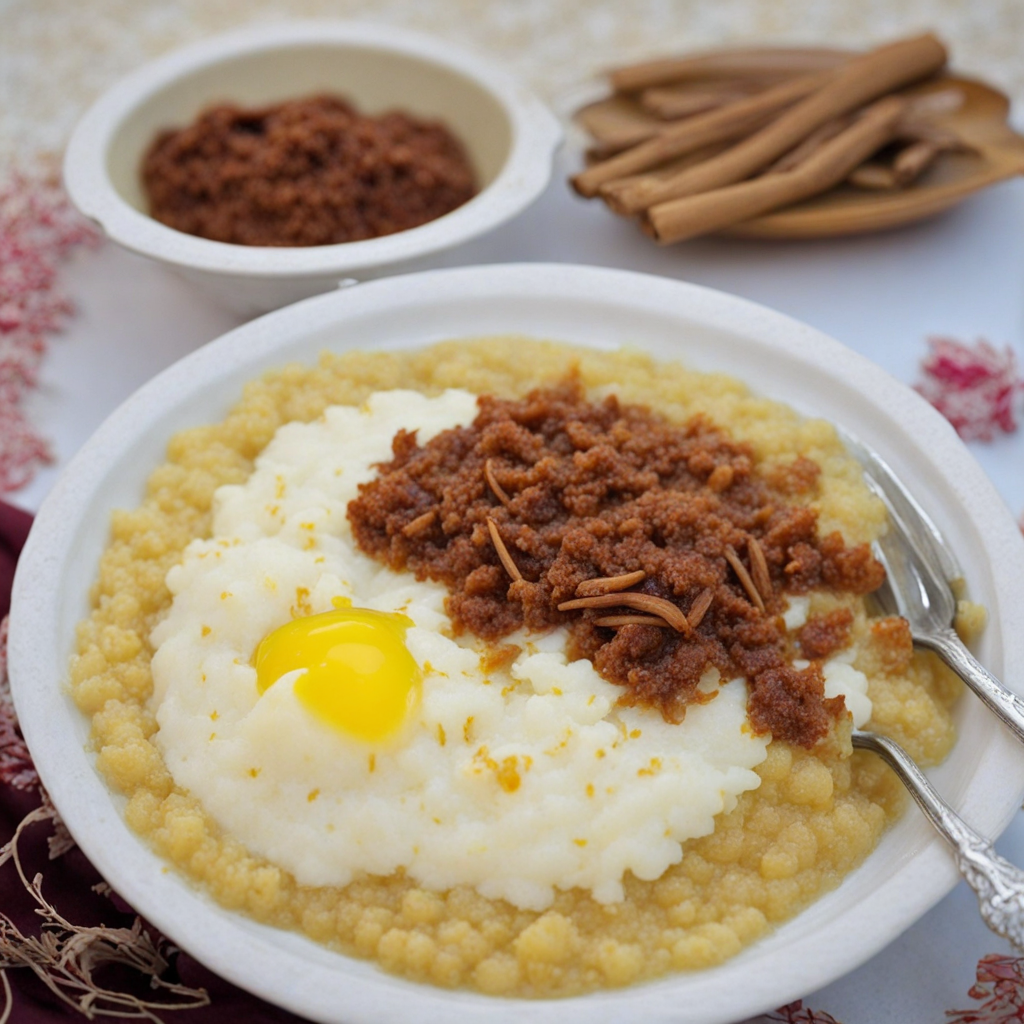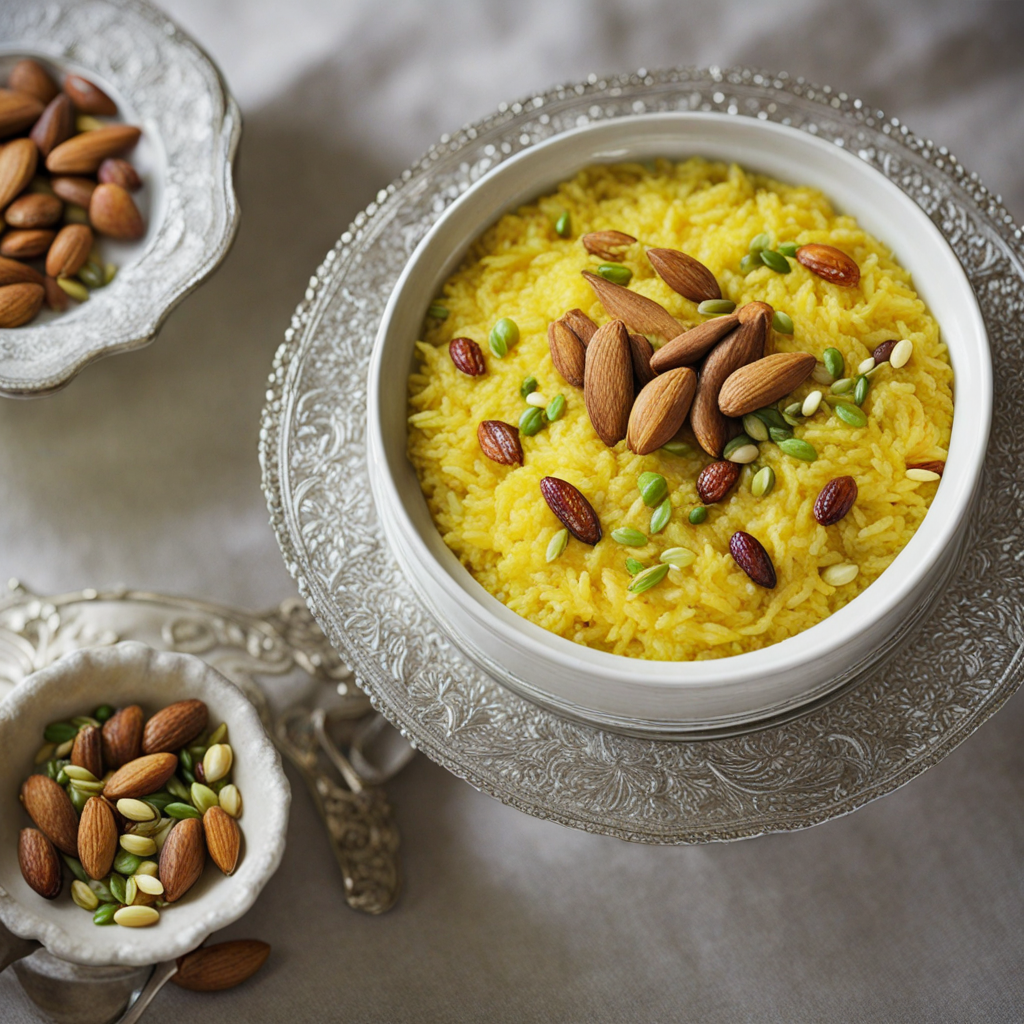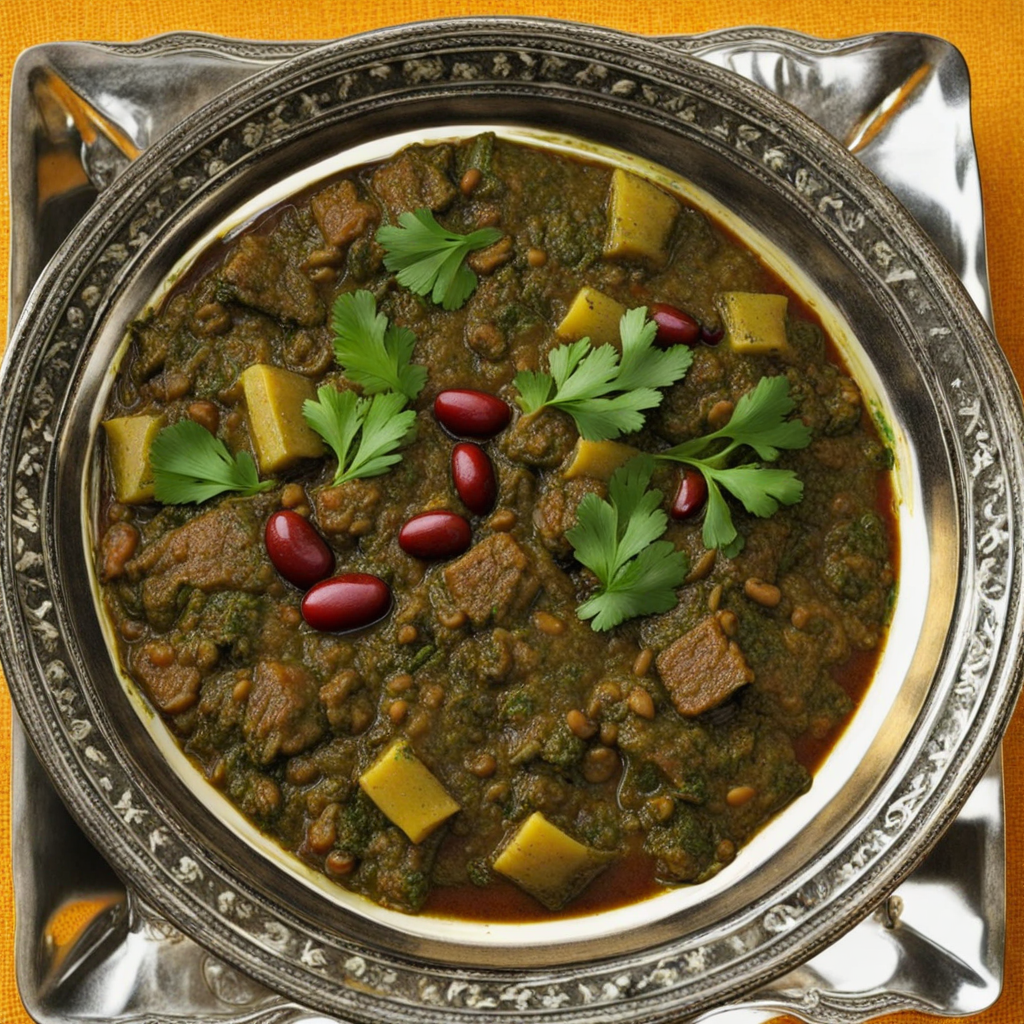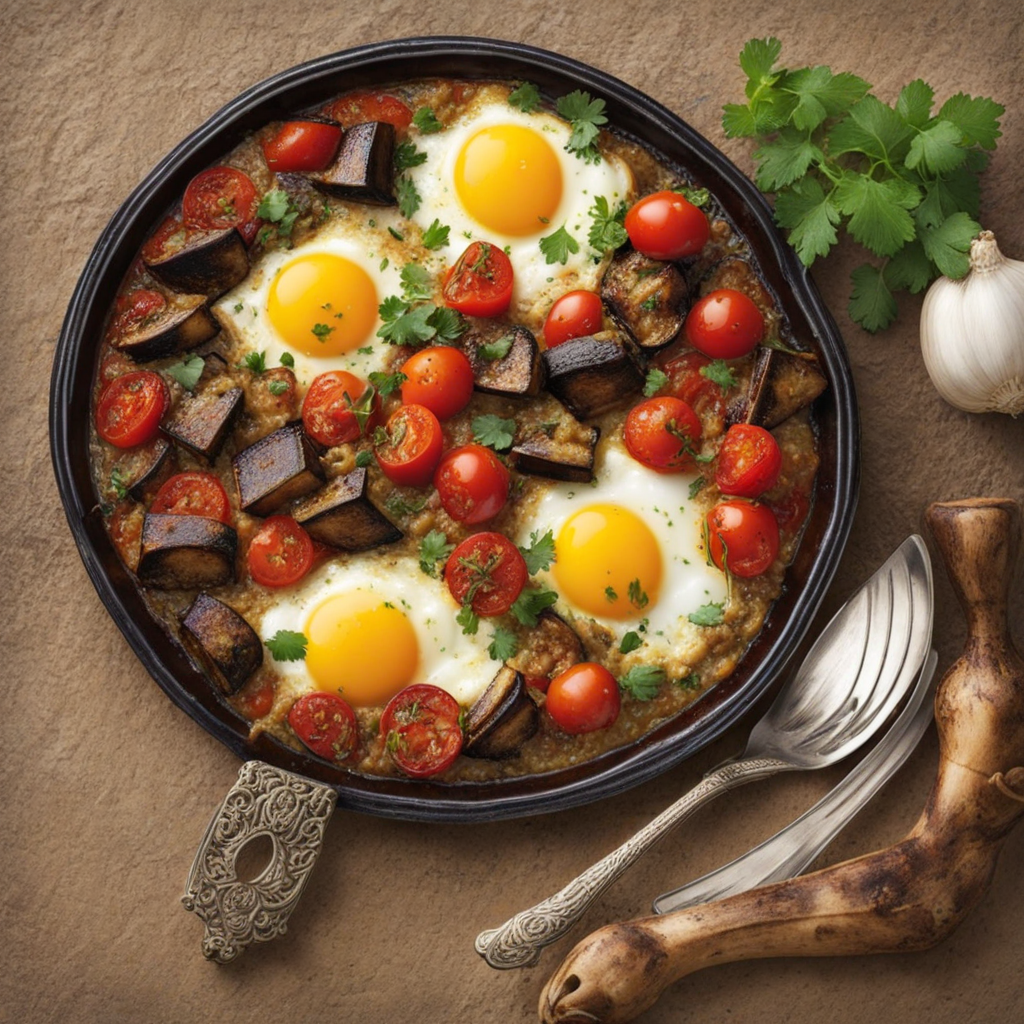Halim
Halim is a traditional Iranian dish that embodies the rich culinary history and culture of the region. This hearty, porridge-like meal is primarily made from wheat, barley, or rice, combined with meats such as chicken or lamb. The ingredients are slow-cooked for several hours, allowing the grains to break down and meld with the tender meat, creating a creamy and flavorful consistency. The dish is often seasoned with aromatic spices like cinnamon and cardamom, which infuse the Halim with a warm, comforting aroma that invites you to indulge in its richness. Served hot, Halim is typically garnished with a drizzle of melted butter and a sprinkle of sugar or cinnamon on top, adding a delightful contrast between savory and sweet. This unique combination of flavors makes Halim a beloved breakfast option, especially during the colder months, but it can also be enjoyed at any time of day. The texture is smooth yet hearty, providing a satisfying and nourishing experience that warms the soul. In Iranian culture, Halim holds a special place during religious observances and festive occasions, symbolizing hospitality and community. It is often served in gatherings and shared with family and friends, reflecting the importance of togetherness in Iranian traditions. The experience of enjoying Halim is not just about savoring its delicious taste; it is also about embracing the stories and memories that come with each bowl, making it a truly remarkable dish to discover.
How It Became This Dish
Origin of حلیم حلیم, known as "Halīm" in Persian and "Haleem" in other regions, is a traditional dish that has its roots in the ancient culinary practices of Persia. The dish is believed to have originated in the Middle East, with some historians suggesting that it dates back to the time of the Sassanian Empire (224-651 CE). Its preparation involves slow-cooking grains and meat, resulting in a thick, porridge-like consistency. The choice of ingredients varies across regions but typically includes wheat, barley, lentils, and a variety of meats such as chicken, lamb, or beef. The name حلیم itself is derived from the Arabic word "حِلْم," which means patience or forbearance, aptly reflecting the lengthy cooking process required to achieve its rich flavor and smooth texture. The dish was likely first made by nomadic tribes who needed a nourishing and hearty meal that could be prepared in large quantities and stored for several days. Over time, as trade and cultural exchanges flourished throughout the region, حلیم spread beyond Persia, adopting local flavors and variations. \n\n Cultural Significance In Iranian culture, حلیم holds a special place not just as a dish but as a symbol of hospitality and communal sharing. It is often prepared during significant Islamic observances, especially during the month of Ramadan when it is consumed to break the fast. The preparation of حلیم is an act of love and generosity, with families often making large batches to share with neighbors and the less fortunate. Beyond its role during Ramadan, حلیم is also served on other festive occasions such as weddings, religious ceremonies, and family gatherings. The communal aspect of enjoying this dish reinforces social bonds, making it an integral part of Iranian hospitality. In many households, the preparation of حلیم is a ritual, passed down through generations, with each family having its unique recipe and method. \n\n Development Over Time As حلیم spread across the Middle East and South Asia, it evolved into various regional forms, each influenced by local ingredients and cooking styles. In Iran, it has remained relatively consistent in its core ingredients, but the methods of preparation can vary significantly. Traditionally, the dish is cooked in a large pot over an open flame for several hours, allowing the flavors to meld beautifully. In contemporary times, some modern kitchens have adopted pressure cookers or slow cookers, reducing the cooking time while still achieving a delightful taste. In addition to its traditional preparation, new variations of حلیم have emerged, reflecting the evolving palate of modern society. For instance, some cooks now incorporate spices like saffron and cardamom to enhance the flavor profile, or they may experiment with vegetarian versions that replace meat with mushrooms or other hearty vegetables. Despite these innovations, the fundamental characteristics of حلیم—its rich, thick texture and comforting warmth—remain intact. \n\n Regional Variations Throughout the broader region, حلیم has inspired a variety of interpretations. In Iraq, for instance, it may be prepared with a greater emphasis on spices, giving it a distinct flavor profile. In Pakistan and India, the dish is often referred to as "Haleem" and is typically made during the holy month of Muharram, particularly to commemorate the martyrdom of Imam Hussain. The South Asian version tends to be richer and is served with a variety of garnishes, including fried onions, fresh coriander, and lemon, showcasing the local culinary traditions. In Turkey, a similar dish known as "Haleem" or "Halim" is prepared, often featuring a combination of meat and grains, but it may also include yogurt and various spices. These regional differences highlight the adaptability of حلیم as it travels across cultures, influencing and being influenced by local tastes and customs. \n\n Modern Era and Global Recognition In the modern era, حلیم has gained international recognition, appearing in various food festivals and culinary showcases around the world. As the global interest in Persian cuisine grows, حلیم has become a symbol of Persian culinary heritage, celebrated for its depth of flavor and cultural significance. With the rise of food blogs and social media platforms, home cooks and professional chefs alike have taken to sharing their own takes on traditional recipes, helping to spread the love for حلیم beyond its traditional borders. This digital age has allowed for a revival of interest in traditional dishes, encouraging younger generations to reconnect with their culinary heritage while also inviting experimentation and innovation. \n\n Nutritional Aspects Apart from its cultural and historical significance, حلیم is also valued for its nutritional benefits. It is a hearty dish, rich in protein from the meat and legumes, while the grains provide essential carbohydrates. This makes it an excellent source of energy, particularly during fasting periods or cold weather. The slow-cooking technique not only enhances the flavor but also ensures that the nutrients are well-preserved, making حلیم a wholesome meal choice. In recent years, as health-conscious eating becomes more popular, variations of حلیم with less fat and more vegetables have emerged, catering to a broader audience while maintaining the essence of the dish. This adaptability has allowed حلیم to remain relevant in contemporary dietary practices. \n\n Conclusion The journey of حلیم from its ancient origins to its modern-day interpretations reflects the rich tapestry of Persian culture and its culinary practices. As a dish that embodies the principles of patience, community, and nurturing, حلیم continues to be a beloved staple in Iranian households and beyond. Its ability to adapt and evolve while retaining its core essence speaks to the enduring nature of culinary traditions and their capacity to connect people across time and space.
You may like
Discover local flavors from Iran


